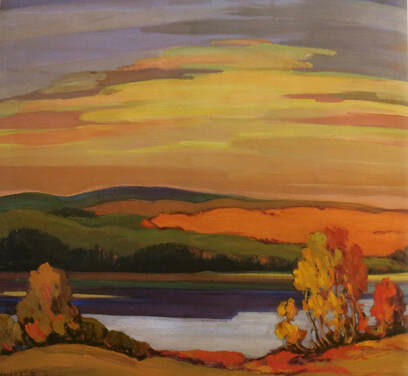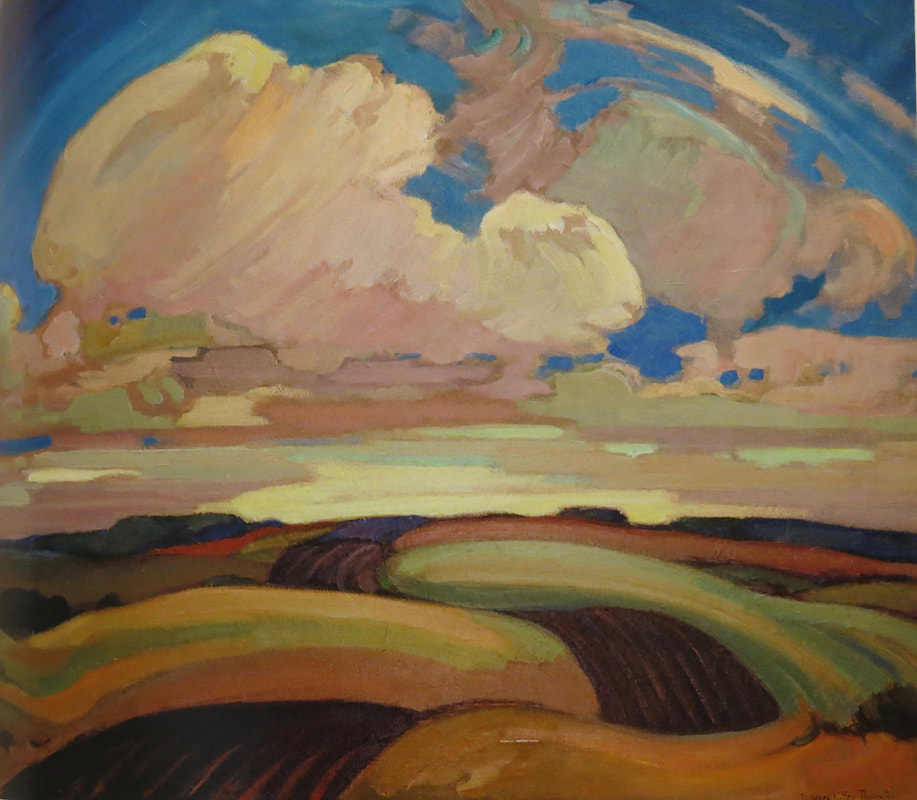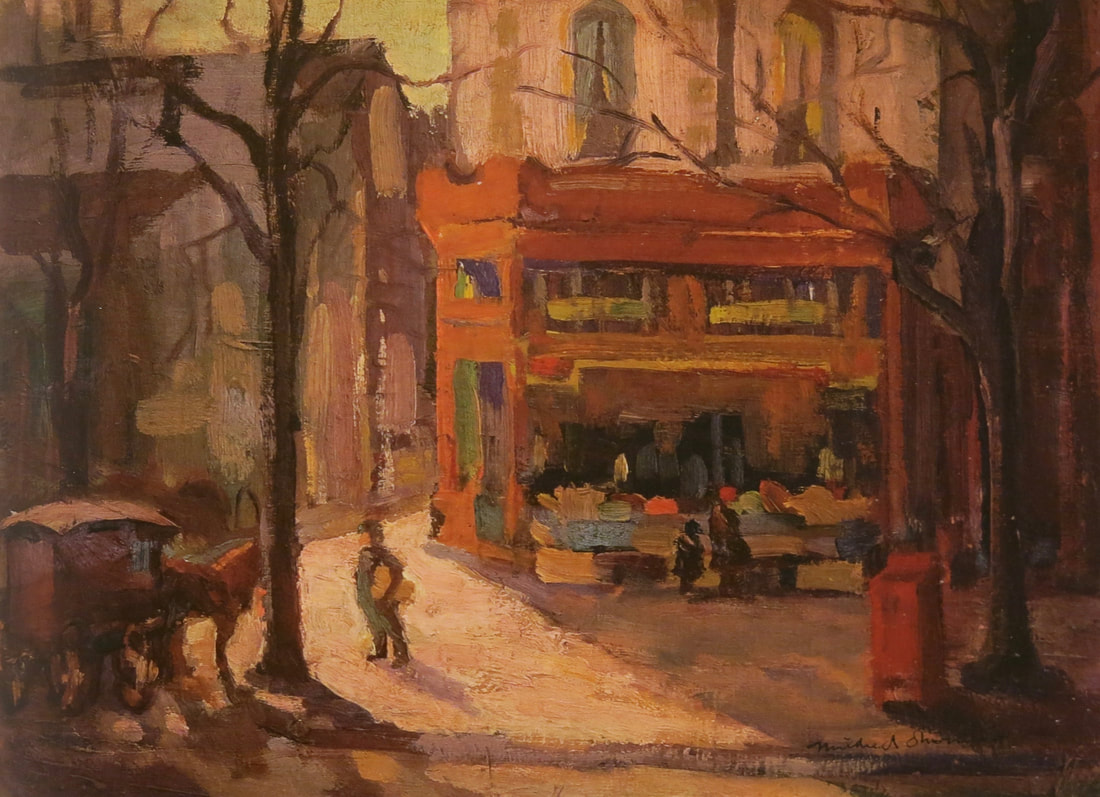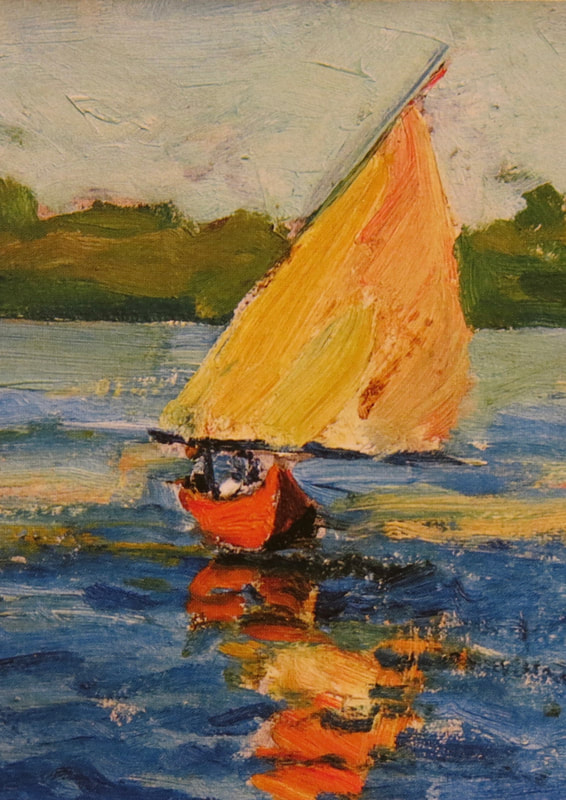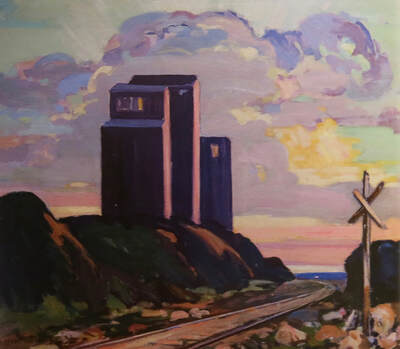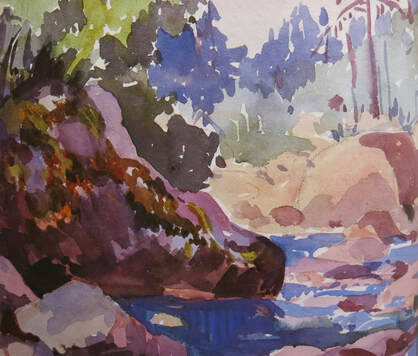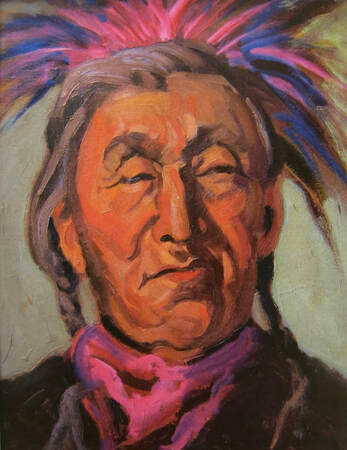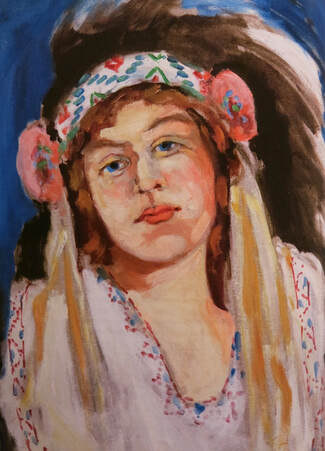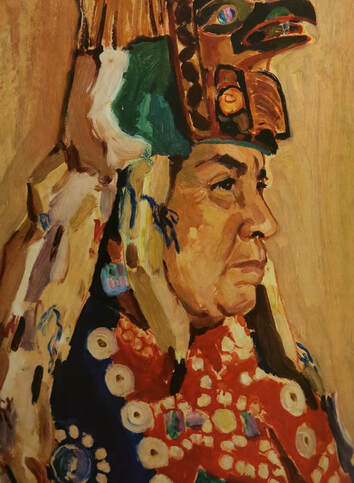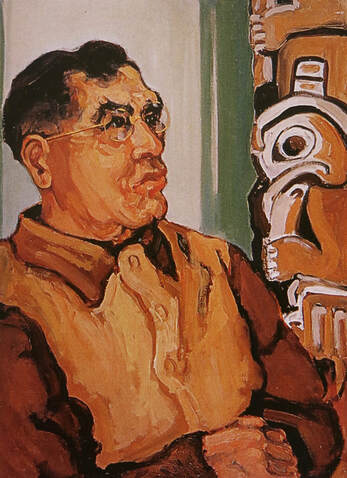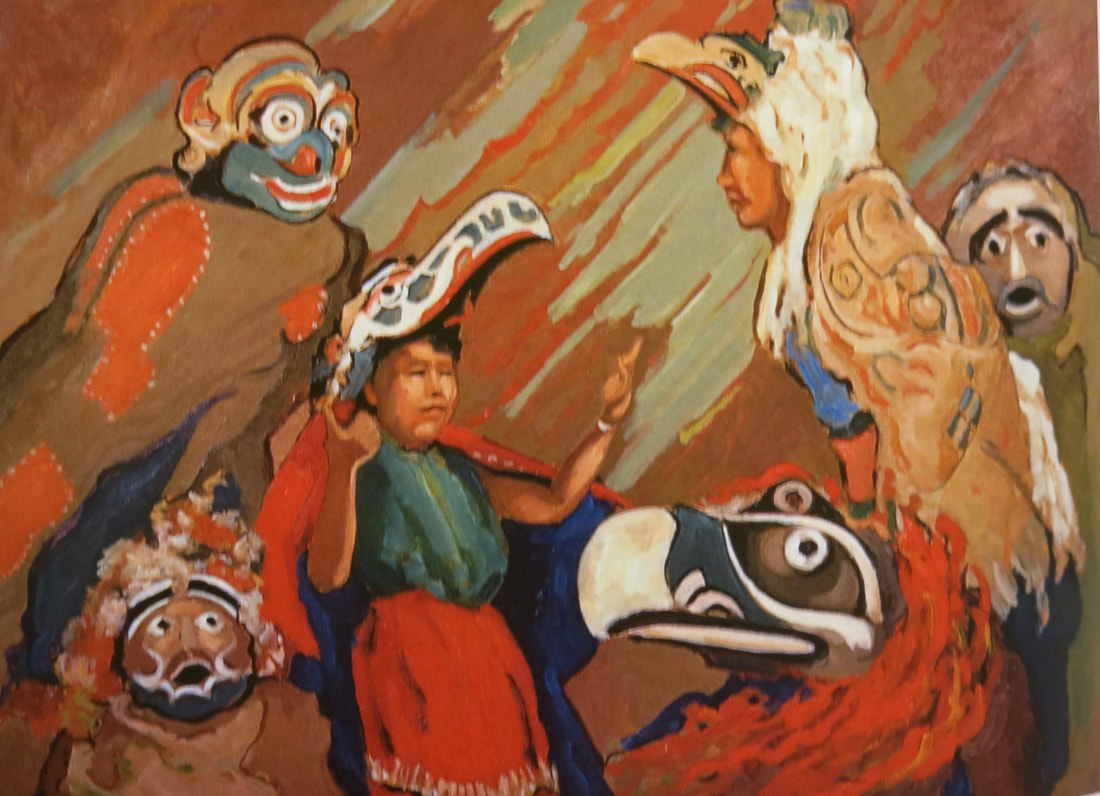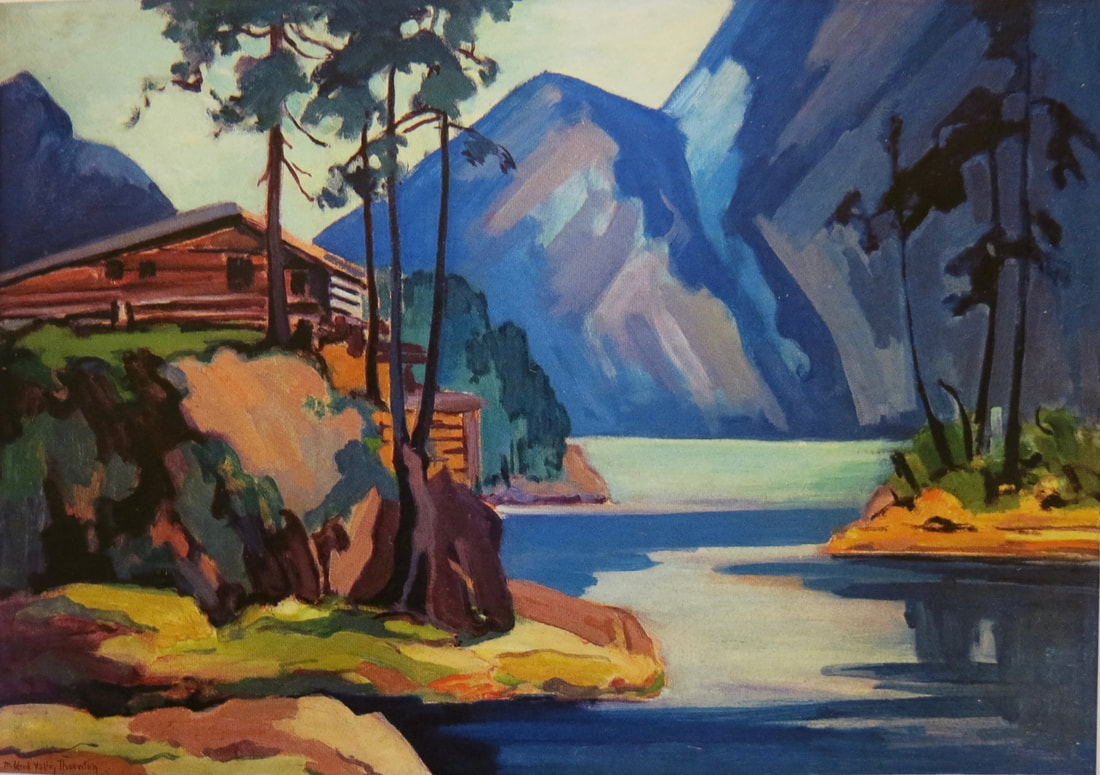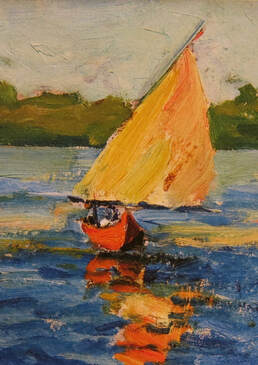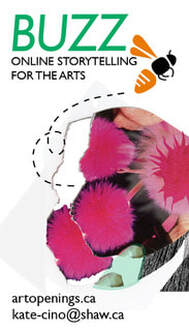Mildred Valley Thornton (1890-1967)
third in the series: Historical Women: Female Artists in Canada
third in the series: Historical Women: Female Artists in Canada
Mildred Valley Thornton was born in rural Ontario in 1890. She grew up on a farm near Chatam in a large family. She attended a one-room school about a mile from home, and her early interests included painting, drawing and poetry. Mildred’s maternal grandfather was an Oxford scholar, musician and artist. His original paintings graced the walls of their parlour. Two of Mildred’s uncles and an aunt (sculptor Evelyn Longman) were educated at Olivet College in Michigan. Her aunt Evelyn studied at the Chicago Arts Institute and forged a successful career in the male dominated field of public sculpture. Mildred was “forever grateful” for the opportunity to receive an education. In 1907, at seventeen, she travelled to Olivet College and was the only Canadian in her class. She graduated in 1910 from a three year program which included an art supervisor’s certificate.
Mildred returned to Toronto, briefly attending the Ontario College of Art. She studied under George Reid (1860-1947) and John Beatty (1869-1941). Beatty was a mentor to several members of the Group of Seven. Beatty painted in Algonquin Park with Tom Thomson and influenced the younger artist’s early compositions. In turn, Thomson appears to have inspired Mildred.
In an unpublished manuscript titled The Way to Painting, Mildred praises Thomson’s “perfectly arranged compositions, his keen perception and unerring precision with subjects, his clear bars of prismatic purity, and careful analysis of tone.” She writes: “There is an elemental grandeur and a bold simplicity about his work which faithfully depicts the Canadian scene.”
Looking at the lustrous colours, sweeping brushwork and sense of place in Mildred’s artwork, we view similar skills and talents.
In an unpublished manuscript titled The Way to Painting, Mildred praises Thomson’s “perfectly arranged compositions, his keen perception and unerring precision with subjects, his clear bars of prismatic purity, and careful analysis of tone.” She writes: “There is an elemental grandeur and a bold simplicity about his work which faithfully depicts the Canadian scene.”
Looking at the lustrous colours, sweeping brushwork and sense of place in Mildred’s artwork, we view similar skills and talents.
In 1913, Mildred moved to Regina, and became an instructor in the art department at Regina College. She married John Thornton in 1915. A reserved businessman, he supported Mildred’s artistic career and helped raise their twin sons, born in 1926. In her third year of marriage (1918) she attended the Art Institute of Chicago for two semesters. John stayed in Regina to work. Chicago was still buzzing from the International Exposition of Modern Art, the famous “Armory Show” of 1913, that hosted 1300 works by 300 European artists. Perhaps Chicago’s inspirational milieu fuelled the radiant palette and bold brushwork of Mildred’s works from this period. Fireguard Saskatchewan (1920) and The Touchwood Hills are good examples of the expressionist style of her landscape paintings.
During the depression, the family struggled, moving from Regina to Vancouver in 1934. Undaunted, Mildred organized a show of Indigenous portraits at the Hudson’s Bay store in 1935. In 1936, her solo exhibition at the Vancouver Art Gallery featured 88 works. An exhibit at the BC Provincial Museum (1942) and yearly shows with the BC Society of Fine Arts followed. Over the years, Thornton’s painting and writing skills, outgoing personality and social justice crusades kept her busy. She expressed her need to paint “as if someone were standing over me with a whip.” She lived in a time when women were expected to stay home and raise families, not pursue a professional art career. But Mildred managed to forge a multi-faceted career, as an art critic, award winning author, public speaker, and exhibiting artist.
Mildred became enthralled with the Indigenous peoples of Canada, travelling widely to remote locales to sketch chiefs and elders. Beginning in 1928, she completed over 300 portraits, many paintings of totem poles, ceremonies and daily activities.
In 1967, at the end of her life, she was distressed that no public institution had offered to purchase her prized First Nations’ collection. Today, Mildred’s collection is dispersed in public and private collections, including some prominent Canadian galleries and museums. In 1997, she became an Honorary Member of the Canadian Portrait Academy. First Nations communities value and exhibit her portraits, as ancestral connectors.
In 1967, at the end of her life, she was distressed that no public institution had offered to purchase her prized First Nations’ collection. Today, Mildred’s collection is dispersed in public and private collections, including some prominent Canadian galleries and museums. In 1997, she became an Honorary Member of the Canadian Portrait Academy. First Nations communities value and exhibit her portraits, as ancestral connectors.
More information about this artist is available at your local library.
The Life and Art of Mildred Valley Thornton by Sheryl Salloum is from the series Unheralded Artists of BC. This well-researched book reveals many fascinating details about this outgoing and talented historical Canadian female artist.
The Life and Art of Mildred Valley Thornton by Sheryl Salloum is from the series Unheralded Artists of BC. This well-researched book reveals many fascinating details about this outgoing and talented historical Canadian female artist.
|
Web Design, Photos and Content by Kate Cino Arts writer published in Focus, Yam and Boulevard. History in Art degree and Public Relations certificate from the University of Victoria This website and its content is copyright of Art Openings, 2009. All rights reserved. Written permission is required for reproduction of photos or text. kate-cino@shaw.ca 250 598-4009 |

